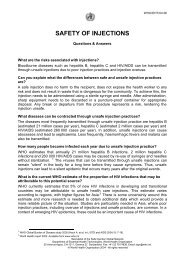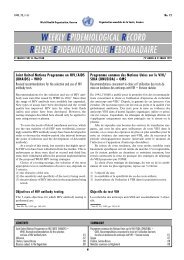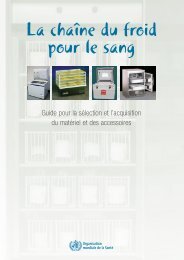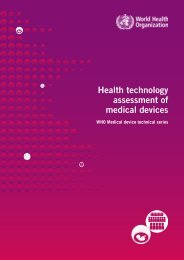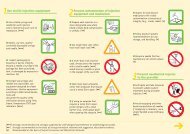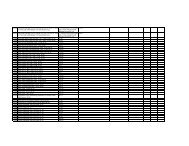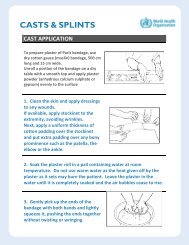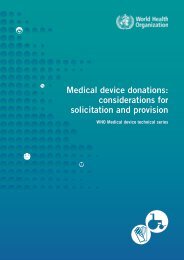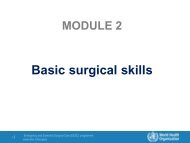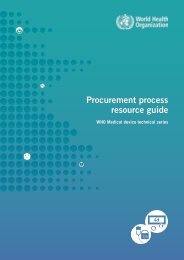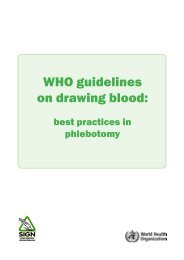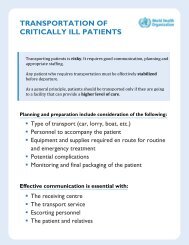Principles and Techniques of Trauma Care
Principles and Techniques of Trauma Care
Principles and Techniques of Trauma Care
You also want an ePaper? Increase the reach of your titles
YUMPU automatically turns print PDFs into web optimized ePapers that Google loves.
PHASE III: SECONDARY SURVEY<br />
Head Exam<br />
– Scalp, eyes, ears<br />
– S<strong>of</strong>t tissues<br />
Neck Exam<br />
– Penetrating injuries<br />
– Swelling or crepitus<br />
Neurological Exam<br />
– Glasgow Coma Score<br />
– Motor examination<br />
– Sensory examination<br />
– Reflexes<br />
Chest Exam<br />
– Clavicles, ribs<br />
– Breath, heart sounds<br />
Abdominal Exam<br />
– Penetrating injury<br />
– Blunt injury: nasogastric<br />
tube<br />
– Rectal exam<br />
– Urinary catheter<br />
Pelvis <strong>and</strong> Limbs<br />
– Fractures<br />
– Pulses<br />
– Lacerations, ecchymosis<br />
37 |<br />
Emergency <strong>and</strong> Essential Surgical <strong>Care</strong> (EESC) programme<br />
www.who.int/surgery



